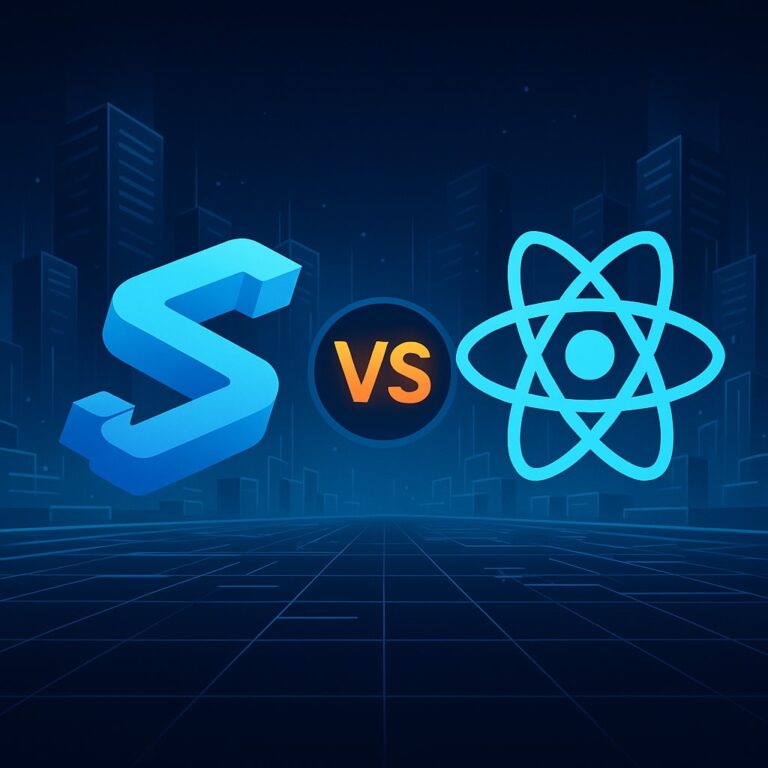Automation is no longer just a buzzword; Automation is transforming industries worldwide, fundamentally changing how businesses operate. By leveraging advanced technologies, organizations can streamline operations, reduce costs, enhance efficiency, and improve overall productivity. This comprehensive article explores ten significant ways automation is revolutionizing cost and time savings for businesses.
The Impact of Automation on Cost and Time Savings
Cost Savings
- Reduction in Labor Costs: Automation minimizes the need for manual labor, particularly for repetitive and time-consuming tasks. This leads to substantial savings on wages and benefits, allowing organizations to allocate funds to other critical areas.
- Decreased Operational Costs: Automated systems often require less maintenance and can function continuously without downtime, reducing operational costs and increasing uptime.
- Improved Accuracy and Reduced Errors: Automation systems are designed to perform tasks with high precision, reducing the frequency of costly mistakes and the need for rework.
- Enhanced Resource Utilization: By automating resource-intensive tasks, organizations can ensure optimal use of resources, reducing waste and improving overall efficiency.
Time Savings
- Faster Processing: Automated systems can handle large volumes of data and tasks more quickly than humans, significantly speeding up workflows and reducing turnaround times.
- 24/7 Operation: Automation tools can operate around the clock without breaks, holidays, or shifts, ensuring continuous productivity and faster completion of projects.
- Streamlined Workflows: Automation simplifies complex workflows, enabling faster execution of tasks and projects.
- Quick Adaptation to Changes: Automated systems can be quickly updated or reconfigured to adapt to new processes, regulations, or business needs, ensuring compliance and minimizing downtime.
Key Technologies Driving Automation
1. Robotic Process Automation (RPA)
What is RPA?
Robotic Process Automation (RPA) involves using software robots to automate repetitive, rule-based tasks traditionally performed by human workers. These tasks include data entry, transaction processing, and generating reports.
How RPA Saves Time and Costs
- Efficiency Gains: RPA can perform tasks much faster than humans, reducing the time required to complete processes. This leads to significant time savings, particularly for high-volume tasks.
- Reduced Errors: Automation minimizes the risk of human error, ensuring high accuracy and reducing the need for rework, which can be costly and time-consuming.
- Labor Cost Reduction: By automating routine tasks, businesses can reallocate human resources to more strategic roles, thereby optimizing labor costs.
Real-World Examples
- Finance: Companies like Deloitte use RPA to automate invoice processing and financial reconciliations, reducing processing times by up to 80%.
- Healthcare: Hospitals employ RPA to manage patient records and billing processes, improving efficiency and accuracy in patient care.
2. Artificial Intelligence (AI) and Machine Learning (ML)
What are AI and ML?
AI refers to the capability of machines to mimic human intelligence, including reasoning, learning, and problem-solving. Machine Learning (ML) is a subset of AI that involves training algorithms to learn from and make predictions based on data.
How AI and ML Save Time and Costs
- Data Analysis: AI and ML can analyze large datasets rapidly, providing actionable insights and forecasts that inform business decisions, saving time on manual analysis.
- Automation of Complex Tasks: AI can automate complex decision-making processes, such as credit scoring in financial institutions, reducing the need for human intervention.
- Enhanced Customer Service: AI-powered chatbots and virtual assistants handle customer inquiries 24/7, reducing the burden on human customer service agents and improving response times.
Real-World Examples
- Retail: Amazon uses AI and ML for personalized recommendations, inventory management, and supply chain optimization, leading to cost reductions and enhanced customer experiences.
- Healthcare: AI algorithms help in early diagnosis and treatment planning, significantly reducing healthcare costs and improving patient outcomes.
3. Business Process Management (BPM)
What is BPM?
Business Process Management (BPM) is a systematic approach to improving an organization’s workflows. It involves analyzing, modeling, implementing, and optimizing business processes to enhance efficiency and effectiveness.
How BPM Saves Time and Costs
- Process Optimization: BPM helps identify inefficiencies and bottlenecks in processes, allowing businesses to streamline workflows and reduce operational costs.
- Improved Compliance: Automated BPM systems ensure processes comply with regulations, reducing the risk of costly fines and legal issues.
- Resource Allocation: BPM ensures optimal allocation of resources, enhancing productivity and reducing waste.
Real-World Examples
- Manufacturing: Siemens uses BPM to optimize production processes, leading to significant reductions in production costs and cycle times.
- Finance: Banks employ BPM to streamline loan processing and compliance management, reducing processing times and operational costs.
4. Internet of Things (IoT)
What is IoT?
The Internet of Things (IoT) refers to the network of interconnected physical devices that collect and exchange data over the internet. These devices include sensors, actuators, and smart appliances.
How IoT Saves Time and Costs
- Predictive Maintenance: IoT devices monitor equipment health in real-time, predicting maintenance needs before failures occur, reducing downtime and repair costs.
- Operational Efficiency: IoT enables real-time monitoring and control of processes, optimizing resource use and reducing waste.
- Enhanced Supply Chain Management: IoT devices track inventory and shipments in real-time, improving supply chain visibility and reducing logistics costs.
Real-World Examples
- Manufacturing: General Electric uses IoT for predictive maintenance in its manufacturing plants, reducing equipment downtime by 20%.
- Retail: Walmart employs IoT to monitor inventory levels and optimize supply chain operations, leading to significant cost savings.
5. Cloud Computing
What is Cloud Computing?
Cloud computing provides on-demand access to computing resources, such as storage, processing power, and software, over the internet. Businesses can scale these resources up or down based on their needs.
How Cloud Computing Saves Time and Costs
- Scalability: Cloud services allow businesses to scale their IT resources quickly and cost-effectively, avoiding the need for large capital investments in hardware.
- Reduced IT Costs: By moving to the cloud, companies can reduce costs associated with maintaining and upgrading on-premises infrastructure.
- Enhanced Collaboration: Cloud platforms enable real-time collaboration and remote work, improving productivity and reducing the need for physical office space.
Real-World Examples
- Finance: Capital One uses cloud computing to enhance its data analytics capabilities, reducing IT costs and improving decision-making.
- Healthcare: The Mayo Clinic employs cloud solutions to manage patient records and support telemedicine services, enhancing care delivery and reducing operational costs.
6. Natural Language Processing (NLP)
What is NLP?
Natural Language Processing (NLP) is a field of AI that focuses on the interaction between computers and humans through natural language. It enables machines to understand, interpret, and respond to human language.
How NLP Saves Time and Costs
- Automated Customer Support: NLP-powered chatbots handle customer queries, reducing the need for human agents and improving response times.
- Data Extraction and Analysis: NLP automates the extraction and analysis of information from unstructured data, such as emails and documents, saving time on manual processing.
- Enhanced Decision-Making: NLP can analyze customer feedback and social media data to provide insights into customer sentiment, aiding in strategic decision-making.
Real-World Examples
- Retail: H&M uses NLP to analyze customer reviews and feedback, helping to improve product offerings and customer service.
- Finance: JPMorgan Chase employs NLP to automate the review of legal documents, reducing the time and cost associated with manual reviews.
7. Optical Character Recognition (OCR)
What is OCR?
Optical Character Recognition (OCR) technology converts different types of documents, such as scanned paper documents or PDFs, into editable and searchable data.
How OCR Saves Time and Costs
- Automated Data Entry: OCR automates the data entry process, reducing the need for manual input and minimizing errors.
- Improved Document Management: OCR enables efficient digitization and management of documents, reducing storage costs and improving accessibility.
- Faster Processing: OCR speeds up the processing of documents, such as invoices and forms, enhancing productivity and reducing turnaround times.
Real-World Examples
- Finance: Banks use OCR to automate the processing of checks and invoices, significantly reducing processing times and operational costs.
- Healthcare: Hospitals employ OCR to digitize patient records, improving data accessibility and reducing administrative costs.
8. Automated Testing
What is Automated Testing?
Automated testing involves using software tools to execute tests on applications automatically, ensuring that they perform as expected. It is essential for maintaining software quality and reliability.
How Automated Testing Saves Time and Costs
- Faster Test Execution: Automated tests run much faster than manual tests, reducing the time required for testing and speeding up the development cycle.
- Improved Test Coverage: Automation allows for comprehensive testing of applications, ensuring higher quality and reducing the risk of defects.
- Reduced Labor Costs: Automated testing reduces the need for manual testers, lowering labor costs and freeing up resources for other tasks.
Real-World Examples
- Software Development: Companies like Google use automated testing to ensure the reliability and performance of their applications, reducing development costs and time-to-market.
- Finance: Banks employ automated testing to ensure the security and functionality of their financial software, minimizing the risk of errors and compliance issues.
9. Workflow Automation
What is Workflow Automation?
Workflow automation involves using technology to automate complex business processes, such as approvals, document routing, and task assignments. It streamlines workflows and improves efficiency.
How Workflow Automation Saves Time and Costs
- Streamlined Processes: Workflow automation eliminates bottlenecks and accelerates the completion of tasks, reducing processing times and improving productivity.
- Reduced Manual Intervention: Automation reduces the need for manual intervention, minimizing errors and ensuring consistency in processes.
- Enhanced Visibility: Automated workflows provide real-time visibility into process status, improving management and decision-making.
Real-World Examples
- Human Resources: Companies like IBM use workflow automation to streamline HR processes, such as onboarding and performance evaluations, reducing administrative costs and improving employee satisfaction.
- Healthcare: Hospitals employ workflow automation to manage patient admissions and discharge processes, enhancing efficiency and patient care.
10. Enterprise Resource Planning (ERP) Systems
What are ERP Systems?
ERP systems integrate various business functions, such as finance, HR, manufacturing, and supply chain, into a single unified system. They provide real-time data and facilitate seamless communication across departments.
How ERP Systems Save Time and Costs
- Integrated Operations: ERP systems integrate all business processes, reducing duplication of efforts and improving efficiency.
- Real-Time Data: ERP provides real-time access to data, enhancing decision-making and reducing the time needed to gather and analyze information.
- Improved Resource Management: ERP systems optimize resource allocation and inventory management, reducing waste and lowering operational costs.
Real-World Examples
- Manufacturing: Toyota uses ERP systems to manage its supply chain and production processes, leading to significant cost savings and improved efficiency.
- Retail: Walmart employs ERP to streamline its inventory management and procurement processes, reducing costs and enhancing operational efficiency.
Conclusion
Automation is undeniably transforming the business landscape, delivering substantial cost and time savings across various industries. By leveraging technologies such as RPA, AI, ML, BPM, IoT, cloud computing, NLP, OCR, automated testing, workflow automation, and ERP systems, organizations can streamline operations, improve accuracy, and enhance productivity. As automation continues to advance, its impact on business operations will only grow, making it an essential strategy for companies aiming to thrive in the modern world.
Embracing automation not only drives efficiency and cost savings but also empowers organizations to innovate, adapt, and stay ahead of the competition. By understanding and implementing these automation technologies, businesses can unlock new levels of performance and profitability, ensuring long-term success in an increasingly automated world.












